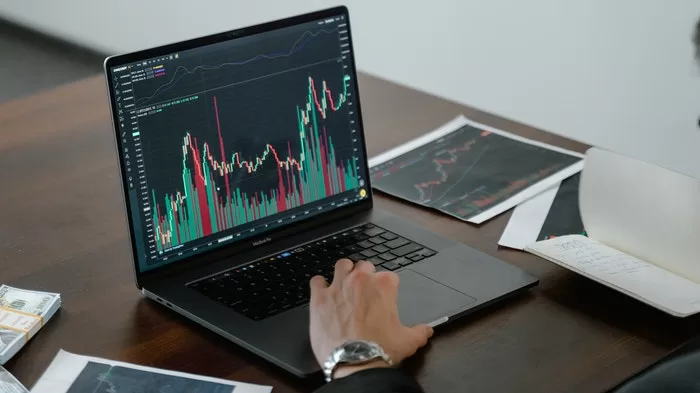Finance
How to Get Started Trading Forex

If you’re new to Forex, or new to trading altogether, you may be unsure about how to get started. In this article, we’ll explain how you can go from zero to hero in 3 steps, and provide helpful tips along the way.
Step 1: choose a broker
Forex brokers are your gateway to the world of online trading. Once you’ve opened and funded an account with a broker, they’ll provide the platforms and the tools you need to trade the markets. That’s why it’s important to choose the right broker. Here are a few things to look out for.
Regulation: the collapse of FTX, a crypto-currency exchange, is a timely reminder about the importance of regulation. Brokers regulated in the European Union, the UK, Australia or other developed markets are required by law to place any funds you deposit with them, in segregated accounts, separate from their own funds.
Reputation: take time to research what other traders are saying about your preferred broker before opening an account. You’ll find a wealth of information online on review sites or Forex forums. Some user reviews may cast your preferred broker in a good light, and others may uncover issues you hadn’t foreseen. You could also run a search on Google News for recently published information.
Costs: your broker’s costs will make a meaningful difference to how successful you are as a trader. Every trading fee or commission your broker charges is money you’ll need to earn back simply to break even. The higher the trading fees, the higher the hurdle. This isn’t to say you should open an account with the cheapest broker; however, you should take their costs into consideration.
Customer care: customer support can be hard to measure from the outset. However, you can form an opinion by reviewing your preferred broker’s support channels, languages and working hours. Ideally, you’ll find a broker that provides support in your language, at a time of day that works for you. If support is only available over the phone, make sure that the telephone number is local to keep costs low.
Educational content: if you are new to trading, you’ll want a broker who can help you learn. Some brokers will even provide one-on-one trading advice when you deposit large sums of money upfront. If this isn’t an option for you, look for a broker that provides learning material in the form of ebooks, videos and webinars.
Step 2: choose platform
The choice of a trading platform is an important one too. In the early days of Forex, brokers tended to build their own platforms from scratch. However, they increasingly support industry-standard platforms like MetaTrader 4 and 5 that traders have come to love.
MetaTrader 4 and 5 are trading platforms used by hundreds of Forex brokers and financial institutions. These brokers all compute for your business through low fees and trading commissions. MetaTrader is free to use, and free to download, for end traders like you. Instead, brokers pay a licence fee to MetaQuotes, the company behind MetaTrader.
Over the years, large communities of traders have formed around MetaTrader 4 and 5. You’ll find hundreds of apps available to download from the MetaTrader app store. Some apps are free, but most are paid for (either in the form of a subscription or an upfront cost). And if you have time and an interest in programming, you could create your own trading apps for free.
Some brokers like eToro and Plus500 have built their own platforms from the ground-up. This has worked well for eToro, because social trading isn’t exactly available through MetaTrader. But this means you’ll need to take time to learn how their platforms’ work, and will need to start over the moment you switch brokers. This explains why most traders prefer to trade through open platforms like MetaTrader 4 or 5.
Step 3: place your first trade
First, you’ll need a trade idea. Do you feel strongly about a stock or a currency pair? Let’s take the US Dollar as an example, as it’s come off its highs. Some believe that we’ve seen the top in the Dollar, and expect the currency to fall further. But others expect we could see a rise in the near-term, partially undoing the recent sell-off. Either way, you’ll need to have an opinion and take one side of the trade, going long or short.
Next, you’ll need to decide how much money to invest. Most trading manuals recommend keeping your position sizes small and diversified, by investing no more than 2 to 5% of your account in a single trade. If your trade doesn’t work-out as expected, you’ll find it easier and less costly to exit your position. You’ll also find it easier to preserve your capital.
Then, you’ll need to decide how much leverage to apply. If you’re new to trading, this isn’t a concept you may have come across before. And most new traders are surprised to learn they can invest more money than they deposit by turning to high leverage Forex brokers like the ones often found offshore. This is possible through leverage, another word for borrowing.
However, if you are just starting out, it’s generally advisable to avoid leverage altogether. First, leverage isn’t free: it comes at a cost that may surprise you. Second, leverage can affect your account in unexpected ways, especially when prices move against you. Your broker may issue a margin call and may even decide to close your account altogether if your balance falls below certain thresholds.
Last but not least, it’s a good idea to have a trading plan, often written down in a trading log or trading journal. Write down the reasons why you invested, as well as target take-profit and take-loss levels. It’s a good idea to write these upfront and stick to them, to prevent emotions from getting in the way of decision-making, when things don’t go your way.






















































